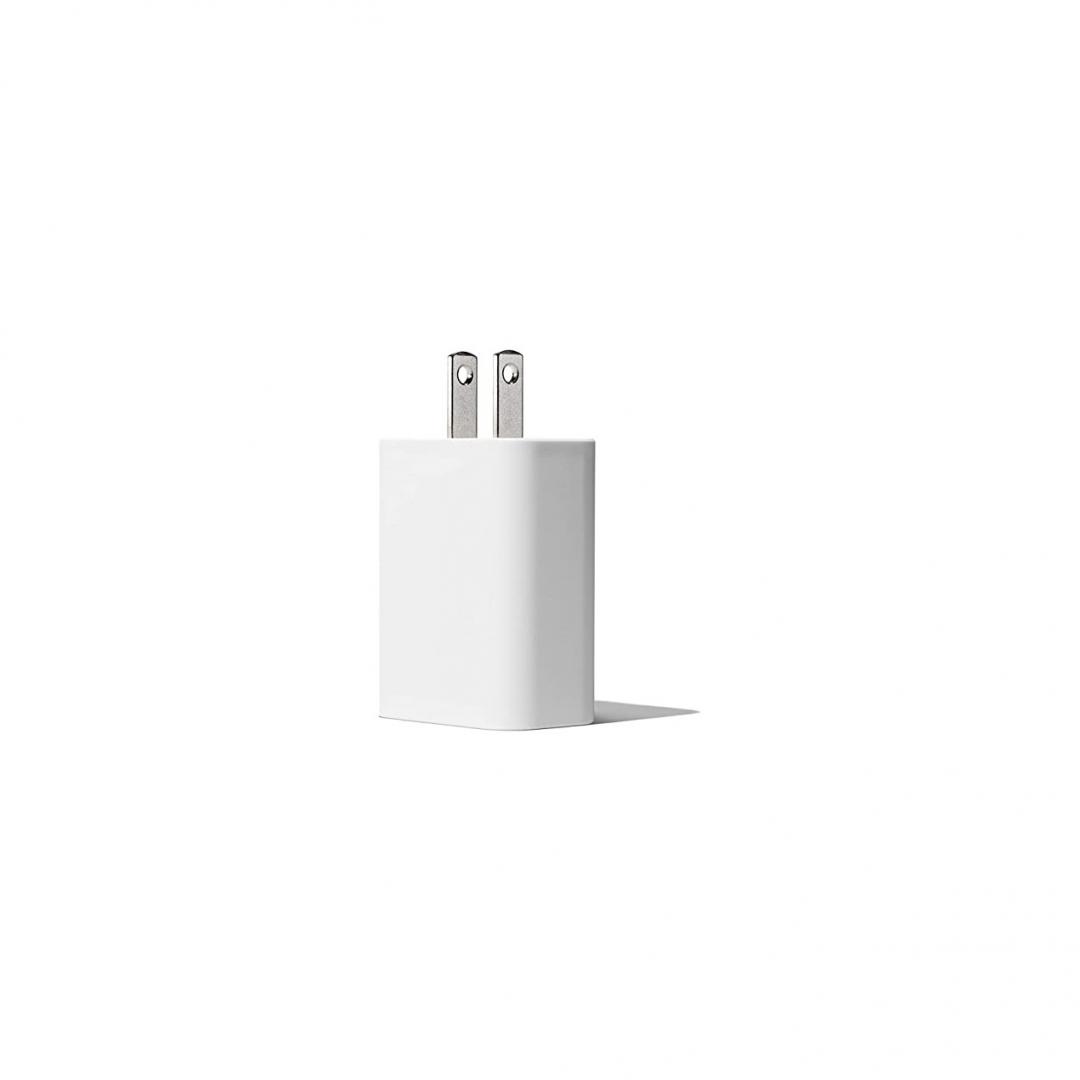Robert Triggs / Android Authority
2021’s Pixel 6 launch seemed to promise a significant boost to the charging speeds of Google’s phones, boasting a 30W charger requirement compared to the sluggish 18W from previous years. Some sleuthing revealed that the company wasn’t entirely honest in its representation, with the Pixel 6 capped at 21W and the 6 Pro handing in 23W of peak power. Fine, but hardly the competitive power levels that the marketing materials initially promised.
Back to the present day, the charging messaging for the Pixel 7 series is unchanged. Google recommends picking up its 30W charger for the new phones, which you must buy separately as the brand no longer includes a charger in the box. However, its fine print notes that real charging power requirements remain at 21W and 23W for the Pixel 7 and 7 Pro, respectively. Once again, the 30W plug requirement is seemingly overkill, and lower power alternatives will achieve the same results. It’s all a bit confusing if you want to pick the correct charger.
We’ve taken Google’s two latest handsets down to our lab to get to grips with exactly what you need to fast charge the Pixel 7 series.
Google Pixel 7 charging test
Two things to note before looking at the numbers. First, the Pixel 7 series charges at its peak power levels when connected to a sufficiently powerful USB Power Delivery PPS plug, which Google’s official and many other third-party products support. Secondly, the handsets peak at a lower 18W-ish of power when connected to a standard USB Power Delivery charger (without PPS support), such as an older Pixel plug or the 30W Apple USB-C charger we’re using for this test. With that out of the way, let’s dive into some figures.
The data speaks for itself; there’s not much difference in full charge times between a PPS and a standard USB Power Delivery Plug. In fact, the Pixel 7 hits full in 100 minutes with USB PD PSS and 101 minutes with an older charger. Meanwhile, the Pixel 7 Pro hits full in 104 minutes with the Google charger and 111 minutes with the regular USB PD Apple model.
We’re talking about a margin of error difference here. Astute readers will also note that the Pixel 7 charge times are a smidgen faster than last year’s models. We clocked the Pixel 6 Pro at 111 minutes to full, though some of this difference could be down to temperature variations at the time of testing.
The Pixel 7 Pro charges a little faster than the Pixel 6 Pro.
Looking at key milestones, there’s not a huge amount in it either. Using the optimal charger, the regular Pixel 7 hits 25% in 15 minutes, 50% in 30 minutes, and 75% in 52 minutes. By comparison, using a non-PPS charger sees the Pixel 7 hit 25% in 17 minutes, 50% in 34 minutes, and 75% in 55 minutes. In other words, opting for an older charger costs you just a couple of minutes compared to the best-case scenario.
There's very little difference in Pixel 7 charge times between a USB PD PPS and non-PPS charger.
There’s a bigger discrepancy for the Pixel 7 Pro, owing to its higher charging rate and larger 5,000mAh battery versus the Pixel 7’s 4,355mAh cell. It hits 25% in 15 minutes, 50% in 30 minutes, and 75% in 55 minutes when using Google’s 30W plug, which follows the Pixel 7’s trajectory very closely. Switching to a non-PPS charger sees these times fall slightly to 25% in 18 minutes, 50% in 37 minutes, and 75% in 60 minutes. PPS is faster out of the case, but even in the worst case, a standard Power Delivery charger is only seven minutes behind Google’s official recommendation.
Although the Pro benefits more from a PPS charger than the regular model, we’re talking mere minutes. It seems pretty clear that stumping up for Google’s 30W charger is not necessarily worth the extra cash, especially for the standard Pixel 7 model.
Why does the Pixel 7 charge slowly?
The why as to the Google Pixel 7 series’ similarly slow charge times, regardless of the plug, can be seen by looking at the power level throughout the charging cycle. The graph below plots the amount of power the handset draws throughout an entire cycle for both of the 30W plugs used in the previous test.
As you can see, the Pixel 7 and 7 Pro hit 21W and 23W, respectively, for not quite half of their charge cycle when using a USB PD PPS plug. This explains why they’re quicker to charge to 25% and 50% via USB PD PSS than standard USB PD. However, after that initial 30-minute charge, both handsets fall back to a more limited power level below 18W.
By comparison, a standard USB PD charger provides close to 19W of power quite consistently until the battery hits around 60% charge. While clearly slower, it’s only a few watts behind what you’ll obtain from a fancier PPS charger.
Google's Pixel 7 Pro benefits more from PPS, thanks to higher power charging, but only by a few minutes.
This explains the virtually identical charge times we saw with the regular Pixel 7. An extra 2W makes very little difference in the early stages of charging, while the regular USB PD charger actually sustains higher power for longer (possibly due to temperatures), which sees it catch up on the PPS charger’s small lead in the latter stages of the charging cycle.
Either way, the Pixel 7 duo certainly aren’t the fastest charging phones on the market, which is almost certainly by design to ensure long-term sustainable battery life. The bigger issue for Pixel owners is maximizing their charging speed and whether it’s worth spending money on a brand-new, state-of-the-art charging plug.
What charger should I use with the Pixel 7?

Robert Triggs / Android Authority
The Pixel 7 and Pixel 7 Pro offer solid battery life, so we expect that most users will be perfectly well served with overnight charging, thanks to Google’s Adaptive Charging technology. In that case, virtually any charger will do, but we’d recommend a USB Power Delivery plug capable of providing 18W of power or more. Such a plug would still work pretty well for a quick day charge, too, and chances are you already have one lying around from an older product.
However, if you prefer day charging and want to ensure you can top your handset up as quickly as possible, you’ll want to pick one of these best Pixel 7 chargers. Any USB Power Delivery PPS charger capable of providing about 25W or more is what you’ll need. However, our testing only suggests this is worthwhile with the Google Pixel 7 Pro — the regular Pixel 7 sees very little benefit. Google’s official 30W plug does the trick here, but there are plenty of third-party options as well.
The moral of the story is always to check your existing chargers too. You could save yourself $20-$30 (and the environment from a little e-waste) by using an existing USB-C charger with your new phone. Even if it costs you a few minutes of full charging time.
Google 30W USB-C Power Charger

Google 30W USB-C Power Charger
Solid USB PD PPS charging speeds • Well-built • Affordable price
Need a power adapter for your new Pixel 6? Google's 30W USB-C Power Charger is a solid choice.
Google's 30W USB-C adapter supports the latest USB Power Delivery PPS specification to fast charge cutting-edge smartphones. By dropping legacy fast charging support, Google's charger is only suitable for the most modern gadgets, but it's priced very fairly and well-built to boot.

 2 years ago
613
2 years ago
613 
















 English (United States) ·
English (United States) ·